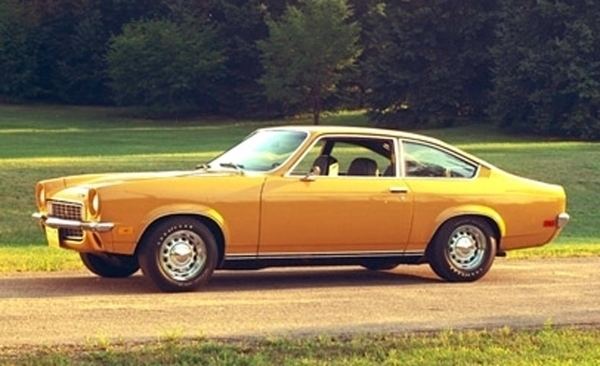Also called H-body Layout FR layout | Class Subcompact | |
 | ||
Manufacturer General Motors Corporation Assembly United States: Lordstown, Ohio (Lordstown Assembly)
South Gate, California (South Gate Assembly)
Canada: Quebec, Canada (Sainte-Thérèse Assembly)
Mexico: Ramos Arizpe, Coahuila Body style(s) 2-door sedan
2-door hatchback
2- door wagon
2- door panel delivery | ||
The General Motors H platform or H-body is an automobile platform designation used for the 1971–1980 model year rear wheel drive line of subcompact cars. The fourth character in the Vehicle Identification Number (VIN) for an H-body car is "H".
H-bodies were available as two-door Notchback, Hatchback, Wagon, and Sedan delivery body-styles, and have 4, 6, and 8-cylinder GM engines, solid rear axle, and unibody construction. The platform was introduced with the 1971 Chevrolet Vega. The Pontiac Astre, Chevrolet Monza, Buick Skyhawk, and Oldsmobile Starfire were introduced for the 1975 model year, while the Pontiac Sunbird was introduced a year later as a 1976 model.
The Vega engine is a 140 CID aluminum-block L4. A 1972 GM prototype had an all-aluminum 302 small-block V8, but this was not approved. Chevrolet hand-built 5000 122 CID L4 Cosworth Twin-Cam engines for the 1975 Cosworth Twin-Cam Vega. Only 3508 1975-76 cars were built. The remaining engines were scrapped. The GM-rotary (GMRCA) Wankel engine was destined for the 1975 Monza 2+2 but the engine was canceled.
The Vega and the Astre were discontinued at the end of the 1977 model year, but the Monza, Sunbird, Skyhawk, and Starfire continued through 1980. The GM J platform replaced the GM H platform in 1981. The H platform designation was later used for the unrelated front-wheel drive GM full-size cars in the 1980s.
